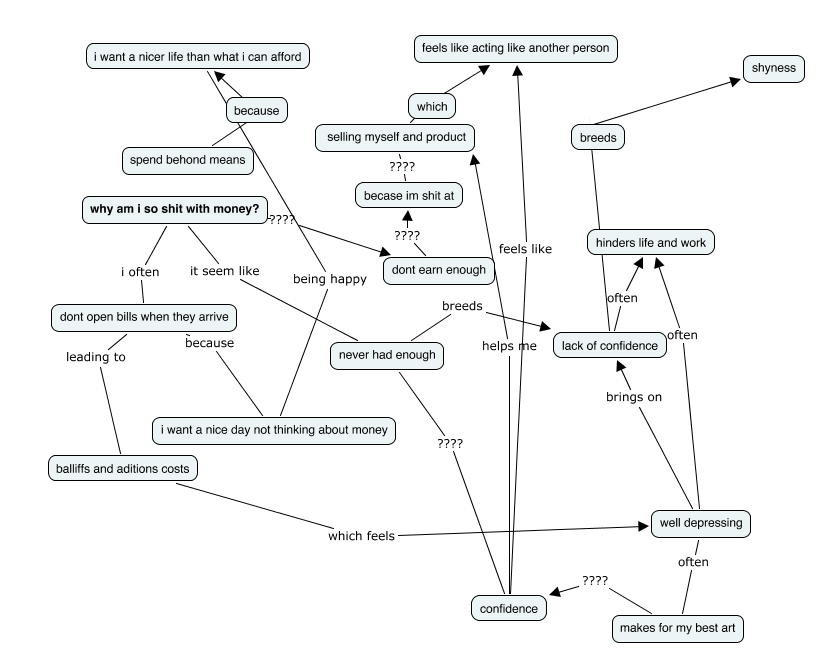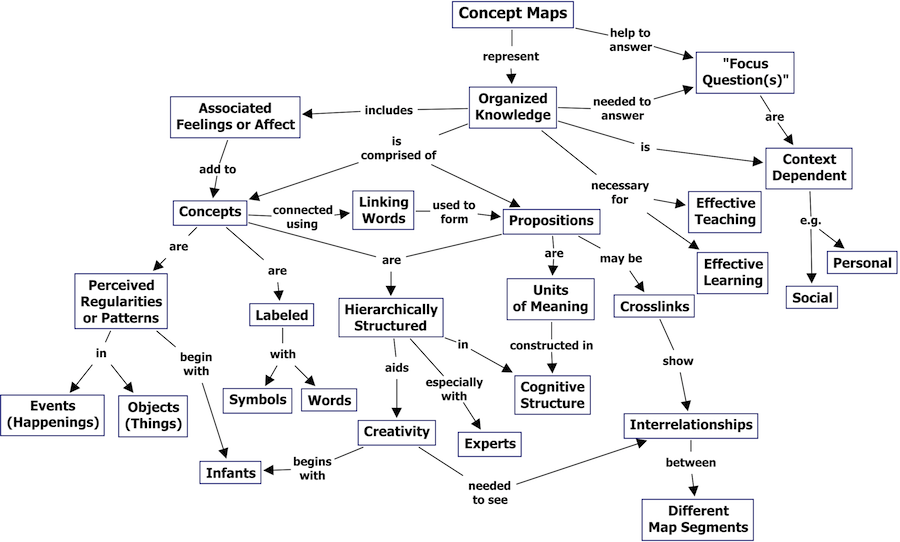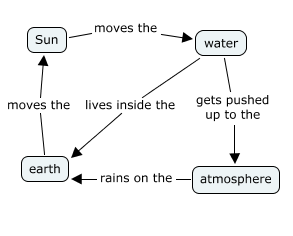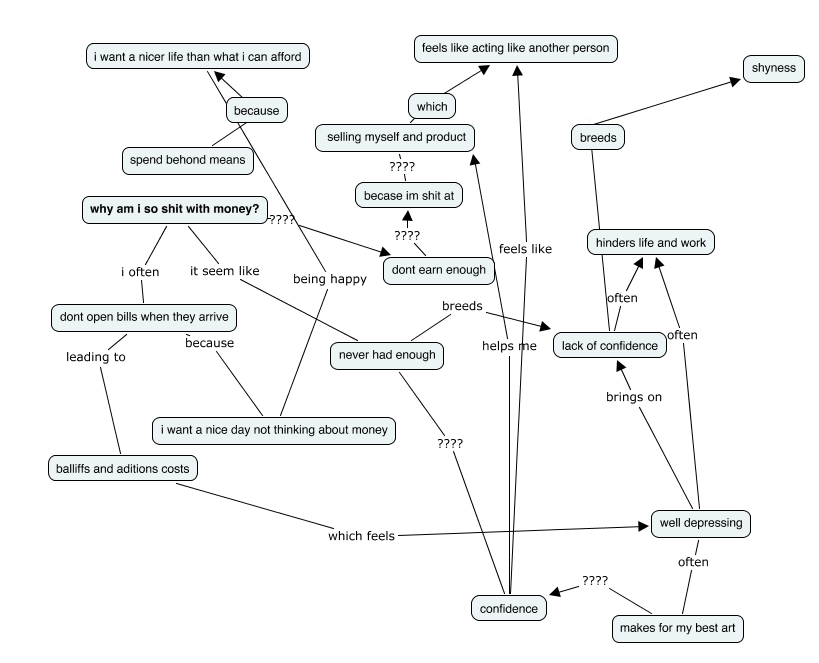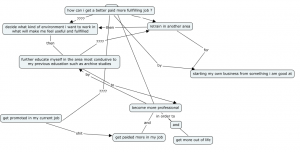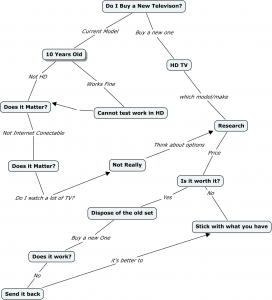Concept Maps are ‘graphical tools for organising and representing knowledge’ They were developed by Joseph D Novak at Cornell University to help students visualise how their new learning could be assimilated with their existing ‘cognitive structure’. Sowa places them within the context of knowledge visualisation diagrams, alongside Semantic nets and Mind Maps.
When making a concept map, concepts represent things or ideas and are described visually by being contained within simple shapes like rectangles or ovals. Links are used to define the relationships between concepts and are described graphically using a small amount of text on a line between two concepts.
It is the freedom to describe the relationships between concepts in your own language that differentiates concept maps from other knowledge visualisation notations such as Semantic Nets. This is also what makes them so much more revealing, they ask the person making them to explain how they connect the dots.
They have been used extensively in education and business settings as a way to measure learning, share expertise and solve problems. Within this context subjectivity is often identified solely as naive theorizing, for example as in this objectively incorrect concept map describing the water cycle.
There has been little exploration into the use of concept maps to represent the positive aspects of more introspective and emotional forms of knowledge. So as part of an assignment for my ChiCI Mres, I decided to see how concept maps could be used as a tool to aid introspection. I asked some people I know to use CMap Tools to create a Concept Map to visualise a problem in their personal lives.
I learnt a lot about which aspects of the CMap tools interface work well and which don’t but that’s another story.
Most of the participants said that as their map grew they started to consider them as aesthetic objects as well as functional visualisation. This may be because they were mostly artists, and so look at most things this way, but it also supports my hunch that there is scope to develop the aesthetics of knowledge representation in the similair way that the aesthetics of information visualization has been transformed over the past couple of decades.
Suggestions for improvement included that the software gives you an answer like a magic eight ball, or that there be a way to get a response from someone else to help you with the problem.
One participant said that.
It’s useful to have it all the things you tell yourself laid out there, then you can decide if you still want to believe that or not.
Another participant told me that..
It reminded me of the poetry of R.D. Laing reflecting on his experiences as a family therapist, his poems are full of all these knots that people get themselves tied up in. They show often you can try to untie one knot, but then that produces another one over there.
How do I get a better more fulfilling job?
Do I buy a new television?

